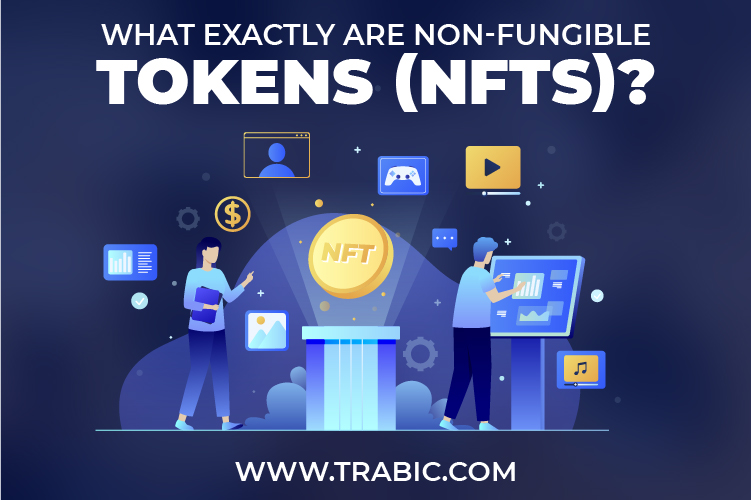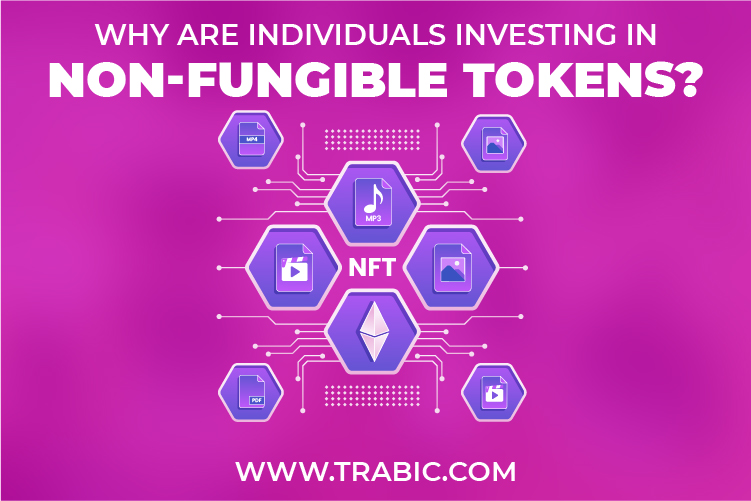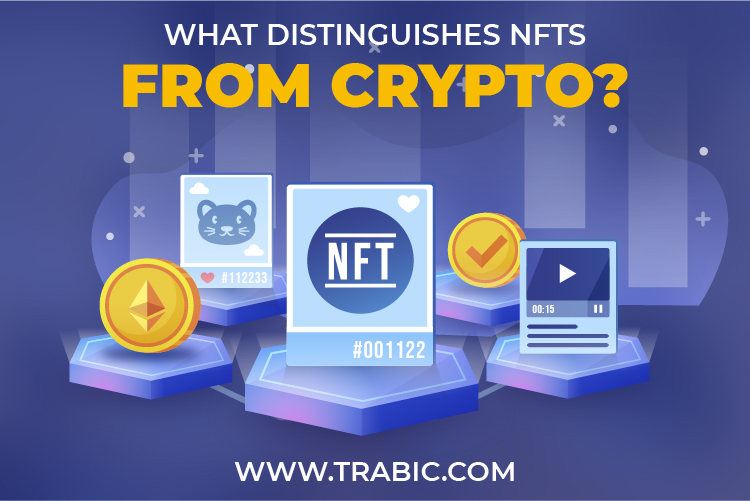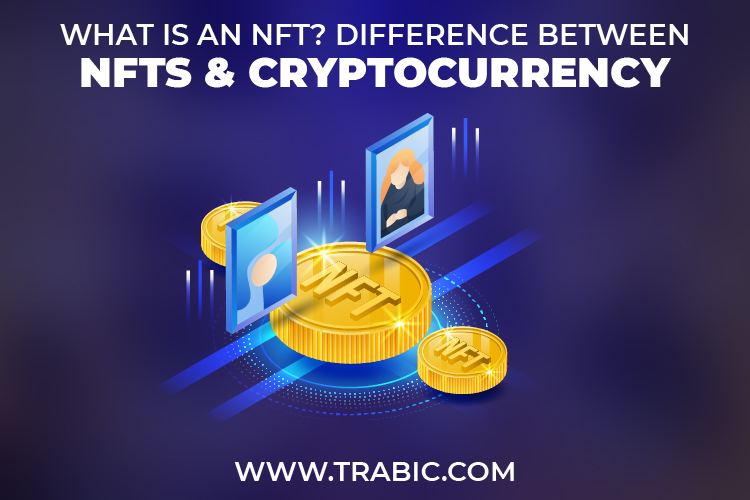If you have been alive under the rock over the last few decades or in some lonely part of the world, you have probably heard the terms bitcoin and NFTs. But do you know what they are in your heart?
If not, we strongly advise you to spend a bit of time in your day deciphering these often-used phrases. It could explain the difference between your life and death!
Explain the distinctions between Cryptocurrencies & NFTs:
We understand that non-fungible tokens can be a mouthful, so it is sometimes abbreviated as NFT. But what exactly are they? How do they function? And what are their benefits?
In this post, we will understand the science behind it and debunk some common myths.
NFT stock and NFTs are currently popular subjects. In 2021, the NFT for Nyan Cat, a 2011-era cat GIF, sold for around $700,000 at the market, with NBA Top Shot NFTs sold for over $400 million by February alone, LeBron James highlights NFT sold for more than $300,000.
Since November 2017, around $176 million has been spent on NFTs, according to Coindesk.
On the other hand, Blockchain variations have been in the headlines for the past few years. What distinguishes NFTs, or why they are driving investors to pay notice?
What exactly are Non-Fungible Tokens (NFTs)?
Non-fungible tokens are abbreviated as NFT. The modifiability of the constituent elements composing a commodity or product is called fungibility. Ten dimes, a dollar bill, and f our quarters are all equal to one US dollar, regardless of how they are divided.

Money is fungible since it makes no difference which quarter you hold; it is still worth a quarter, and there is nothing inherently more valuable in one dime than the other.
A non-fungible product is anything unique, such as furniture, artwork, gemstones, and is thus valued independently.
As a result, a non-fungible token (NFT) is a digital asset that represents a one-of-a-kind item, such as music, video game items, or digital art. Consider a weapon you made in World of Warcraft and sold to another player for virtual gold. The sword exists only in the online world, but it cannot be exchanged for any other digital product and has real-world value.
What exactly is Crypto-currency?
Cryptocurrency is a sort of encrypted digital currency which does not depend on financial institutions to authenticate transactions. Cryptocurrency is stored in a digital wallet.
This peer-to-peer network, which uses blockchain technology, allows anyone to send and receive money. When a bitcoin transaction is made, it is registered on a public ledger.
Several companies have established crypto-currencies, also known as a token, that allow consumers to trade specifically for a company’s service or product. Individuals must exchange actual dollars for cryptocurrencies to purchase products or services.
The most well-known cryptocurrencies are the following:
Bitcoin: Bitcoin has been a digital currency since 2009 it was introduced. People can buy and sell bitcoin using other currencies in markets known as bitcoin exchanges.
Ethereum: Ethereum is a blockchain-based software that helps developers create smart contracts and distributed applications. Ethereum is a cryptocurrency used on the Ethereum network.
Litecoin: Litecoin is a peer-to-peer, open-source cryptocurrency that enables anybody to send money without third-party or bank participation.
Tether: Tether is a steady coin whose value is directly proportional to the value of the fiat money it represents, such as the Yen, Euro, or US dollar. In contrast, the prices of Bitcoin and Ethereum fluctuate dramatically.
Why are Individuals Investing in Non-Fungible Tokens?

NFTs provide personal ownership of digital goods, allowing people to extricate value from digital assets by implementing an ownership framework or something that can sell. In the absence of NFTs, digital assets are easy to transfer but challenging to hold.
You can create digital art; however, it becomes the site’s property when you publish it on social media. Furthermore, anyone can replicate and disseminate the artwork using their techniques. With NFTs, this is still conceivable, but the station will not own the painting. NFTs allow the owner to demonstrate, brag about, and exert distinctive ownership in previously unimaginable ways.
NFTs create possession of a work of art or another digital asset, allowing users to trade and acquire them while also producing new value freely. A print of a Van Gogh painting, for instance, is widely available, yet the original is highly precious. Similarly, anyone can replicate a meme and publish it on social networks, but the foremost thing is priceless.
The capacity to continuously prove ownership of work and present it elsewhere is critical for keeping physical art valuable. It has never been much more relevant in the digital world.
Because NFTs are in small supply, their value varies with demand and interest. They can be minted on the blockchain to represent both tangible and intangible entities, such as:
For example, Kanye West’s Kanye West x Adidas Yeezys may sell for more than $900.
People sold visual art for $72.2 million, including ‘Every day: A First 5000 Days’.
Tracks of music
The first tweet sent by Jack Dorsey sold for $3 million.
What distinguishes NFTs from Crypto?

NFTs and crypto-currencies are both built on the blockchain and use the same concepts & technology. As a consequence, they tend to allure similar types of people. NFTs might be considered a part of the crypto culture, and purchasing and trading NFTs frequently necessitates the use of bitcoin.
The name, on the other hand, emphasizes the fundamental distinction. The term crypto-currency refers to a sort of currency. It has no monetary value and is exchangeable in the same way that any other money is. No matter which crypto token you own within a specific cryptocurrency, which has the same value as the next, 1 $ETH = 1 $ETH. Non-fungible tickets, on the other side, have a worth that stretches far beyond economics.
What are the capabilities of NFTs?
Initially, the appeal of NFTs was just that they enabled actual ownership of digital products that paralleled those in the “real world.” NFTs, on the other hand, are significantly more capable. NFTs allow creators to earn royalties even after their art is auctioned, which is impossible with an actual painting. Celebrities like Grimes, Paris Hilton & Snoop Dogg are releasing one-of-a-kind art, experiences, & souvenirs as NFTs because they recognize their value.
- NFTs promise to cut out all the intermediaries in digital publishing, allowing artists of all disciplines to market directly to the followers and admirers, who will function as patrons. In this respect, NFTs may open the way for a restoration of a more traditional version of the artistic community, wherein people support artists they appreciate.
- With NFTs, you can not only spend money on a new artist by acquiring their earlier stuff and earning as the value of the work grows, but also you can infuse the time promoting the fame & still benefit when the value goes up.
- Makers can also participate and transact directly with their viewers: the public can express their opinion & have a greater chance of being noticed. Though leaders argue that NFTs would serve as a basis for virtual governments in which all NFT holders have an equal vote in governance.
- In comparison, today’s social-media platforms operate like dictatorships, with just a small number of persons capable of evicting users on the spur of the moment. With the confluence of NFTs and crypto-currency, they could build entire economies on digital assets one day.
Should You Invest in NFTs?
Though metaverses are in their infancy, numerous companies are already making inroads into the digital realm.
Since NFTs are just so new, it will be wise to invest in small amounts to trial them out for now. In another sense, trading in NFTs is primarily a matter of personal preference. It’s worth considering if you have any extra cash, specifically if the artwork has emotional meaning to you.
However, remember that the price of an NFT is entirely decided by what somebody is willing to pay for it. Ins conclusion, demand will determine the price instead of technical, economic, or fundamental variables, which frequently influence stock values and, at most, serve as a foundation for stockholder demand.
It indicates that an NFT can be resold for below the amount you pay. You may not be able to buy and sell it if nobody wants it. Do your research, understand the risks (including the prospect of losing the entire investment), and continue with caution if you decide to proceed.

Pingback: